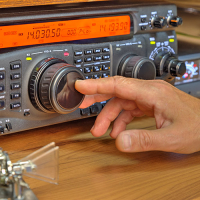Endangered status proposed for tri-colored bat
 White-nose syndrome is killing 90% of tri-colored bats in the colonies it affects. Pete Pattavina/USFWS photo
White-nose syndrome is killing 90% of tri-colored bats in the colonies it affects. Pete Pattavina/USFWS photo
The deadly disease white-nose syndrome has killed more than 90% of tri-colored bats in affected bat colonies, and now the U.S. Fish and Wildlife Service has issued a proposal to list the species as endangered.
Bats are essential for healthy ecosystems and contribute at least $3 billion annually to the U.S. agricultural economy through pest control and pollination. The growing extinction crisis highlights the importance of the Endangered Species Act and efforts to conserve species before declines become irreversible.
White-nose syndrome is currently present across 59% of the tri-colored bat’s range. The species is found east of the Rocky Mountains in 39 U.S. states and the District of Columbia, in four Canadian provinces and in portions of eastern Mexico, Guatemala, Honduras, Belize and Nicaragua.
“White-nose syndrome is decimating hibernating bat species like the tricolored bat at unprecedented rates,” said FWS Director Martha Williams. “Bats play such an important role in ensuring a healthy ecosystem. The Service is deeply committed to continuing our vital research and collaborative efforts with partners to mitigate further impacts and recover tricolored bat populations.”
Tricolored bats are vulnerable to the disease during the winter, when hibernating in caves and abandoned mines and tunnels. During spring, summer and fall, they roost primarily among leaf clusters of live or recently dead trees, emerging at dusk to hunt for insects over waterways and forest edges. While white-nose syndrome is by far the most serious threat to the species’ survival, other threats — such as habitat disturbance, climate shifts and mortality from wind energy facilities — now have greater significance due to the dramatic decline in the species population.
The proposal follows a March announcement of a similar finding for the northern long-eared bat, which the FWS recommended should be reclassified from threatened to endangered, largely due to white-nose syndrome.
When a species is listed under the Endangered Species Act, the FWS works with industry and other players to find strategies to avoid harming, harassing or killing the species in question. Tools include consultation and habitat conservation plans that offer management flexibility and predictability while providing long-term conservation for listed species. The FWS will not designate critical habitat if the tri-colored bat is listed, because habitat loss is not having large rangewide effects on the species, and identifying bat roost locations could increase the risk of harm to the bats.
To address the growing threat of white-nose syndrome to the tricolored bat and other bats across North America, the FWS is leading the White-nose Syndrome National Response Team, a coordinated effort of more than 150 non-governmental organizations, institutions, tribes and state and federal agencies. The team conducts research and develops management strategies to minimize impacts from the disease and recover affected bat populations. The effort has yielded scientific advancements that include identifying crucial information about the disease and its impacts, development of disease surveillance tools, and testing of various treatments to improve bat survival.
Comments on the proposed rule to list the tricolored bat as endangered can be submitted through Nov. 14 online at regulations.gov by searching for 1018-BG15, by mail to Public Comments Processing, Attn: FWS-R5-ES-2021-0163, U.S. Fish and Wildlife Service, MS: PRB/3W, 5275 Leesburg Pike, Falls Church, VA 22041, or during a virtual public hearing scheduled for Wednesday, Oct. 12. An informational meeting will be held at 6 p.m. followed by the public hearing 7:30-8:30 p.m. Register at bit.ly/3ScEuX8. A final decision will be made within 12 months.





